Key Takeaways
1. Ellison's Vision: From Database to E-Business Empire
I really don’t think there will be another paradigm shift. This is it.
Early ambition. Larry Ellison's initial goal was modest: a small company with a few employees, offering him control over his work environment. However, his ambition quickly expanded, driven by a desire to dominate the computing world. He saw the database as the foundation for a new era of computing, and Oracle as the company to lead the charge.
From database to e-business. Ellison recognized the transformative power of the Internet early on, understanding that it would exponentially increase the number of database transactions and the number of people who would interact with Oracle's databases. This led him to shift Oracle's focus from client/server to a new model of computing based on the Internet.
Beyond Microsoft. Ellison's vision extended beyond simply competing with Microsoft. He aimed to create a company that would be as influential as industrial icons like Ford and IBM, whose products and vision had changed the way the world works. He believed that Oracle, with its focus on information management, was poised to become the dominant force in the information age.
2. The War on Complexity: Simplicity as a Competitive Edge
Software has to be made much more simple.
Client/server's flaws. Ellison viewed the client/server model as an "evolutionary dead end" that distributed complexity and fragmented data. He believed that the answer was a new model of computing based on the Internet, where complexity would be hidden in the network.
Best-of-breed's trap. Ellison argued that the practice of assembling systems from different software vendors was an expensive and inefficient approach. He believed that companies should buy a complete, integrated suite of applications from a single vendor, like Oracle, to avoid the problems of integration and data fragmentation.
Simplicity as a strategy. Ellison's "war on complexity" was not just a technical argument but a business strategy. He believed that by making software simpler and easier to use, Oracle could gain a competitive advantage and attract customers who were tired of the complexity and expense of traditional IT systems.
3. The Oracle Way: A Culture of Innovation and Aggression
I always feel good when everyone says I’m nuts because it’s a sign that we’re trying to do something innovative—something truly new and different.
Challenging the status quo. Ellison thrived on being contrarian, often making bold predictions and challenging conventional wisdom. He saw this as a way to drive innovation and differentiate Oracle from its competitors.
A culture of intensity. Oracle's culture was characterized by a relentless pursuit of success, a willingness to take risks, and a strong emphasis on competition. This culture, while contributing to Oracle's success, also led to some of its most serious problems.
The importance of vision. Ellison's ability to articulate a compelling vision for the future of computing was a key factor in Oracle's success. He was able to inspire his employees and customers with his passion for technology and his belief in Oracle's potential.
4. The Near-Death Experience: A Crucible for Reinvention
It’s win or die.
The 1990 crash. Oracle's near-collapse in 1990 was a result of overaggressive sales tactics, a buggy product release, and a lack of financial discipline. This crisis forced Ellison to confront the flaws in his management style and to make fundamental changes to the way Oracle operated.
Rebuilding the company. In the aftermath of the crash, Ellison brought in seasoned managers like Ray Lane and Jeff Henley to bring order and discipline to the business. He also focused on improving the quality of Oracle's products and on building a more sustainable business model.
Lessons learned. The near-death experience taught Ellison the importance of financial prudence, the need for strong management, and the dangers of unchecked ambition. It also reinforced his belief in the power of innovation and the need to constantly challenge the status quo.
5. The Power of a Single Database: The Core of Oracle's Strategy
The database is at the center and the applications are attached around the periphery.
Data-centric approach. Ellison believed that the key to effective information management was to centralize data in a single database. He argued that traditional applications design focused on automating processes, while modern application design should focus on managing information.
The single data model. Oracle's E-Business Suite was designed around a single shared data model, which meant that all applications could access and share the same information. This eliminated the problems of data fragmentation and inconsistency that plagued best-of-breed systems.
The database as the hub. Ellison saw the database as the essential platform for Internet computing, effectively displacing the operating system. He believed that the database would be the central point of integration for all of a company's information systems.
6. The E-Business Suite: A Bet-the-Company Gamble
We have this one chance to win, and I know that unless we screw up, it’s going to happen.
A complete suite. Ellison's vision for the E-Business Suite was to create a complete package of applications that could automate every aspect of a company's business. This would eliminate the need for expensive systems integrators and allow customers to buy everything they needed from a single vendor.
The "no customization" approach. Ellison argued that customers should install the E-Business Suite in "plain vanilla" form and avoid expensive modifications. He believed that by standardizing their processes, companies could achieve greater efficiency and lower costs.
A challenge to the industry. The E-Business Suite was not just a product but a challenge to the entire enterprise computing industry. It was an attack on best-of-breed software vendors, systems integrators, and the conventional wisdom of the time.
7. Beyond Software: Ellison's Life, Legacy, and Future
Gardens last for hundreds of years, companies don’t. That’s because people love and take care of gardens.
A life of many passions. Ellison's life extended far beyond the world of software. He was a passionate sailor, a collector of Japanese art, and a patron of medical research. These diverse interests reflected his restless intellect and his desire to explore the limits of human potential.
A legacy of innovation. Ellison wanted to be remembered not just as a successful businessman but as a visionary who had changed the way the world works. He believed that Oracle had the potential to become the most influential corporation on earth, and he was determined to make that happen.
A life beyond Oracle. Although he was deeply committed to Oracle, Ellison also contemplated a life beyond the company. He was interested in working in biotechnology and in using his wealth to make a positive impact on the world. He was also thinking about starting a new family.
Last updated:
FAQ
What is Softwar: An Intimate Portrait of Larry Ellison and Oracle by Matthew Symonds about?
- Comprehensive biography and company history: The book provides an in-depth look at Larry Ellison’s life, his management style, and the rise of Oracle Corporation from a small startup to a global software powerhouse.
- Focus on technology and business strategy: It explores Oracle’s technological innovations, especially in databases and enterprise software, and Ellison’s vision for integrated software suites versus best-of-breed solutions.
- Coverage of major events and challenges: The narrative includes Oracle’s internal crises, competitive battles with Microsoft and SAP, the rollout of the E-Business Suite, and Ellison’s personal pursuits such as sailing and philanthropy.
Why should I read Softwar: An Intimate Portrait of Larry Ellison and Oracle by Matthew Symonds?
- Rare access to Ellison: The author had unprecedented access to Larry Ellison and Oracle executives, offering candid insights into Ellison’s personality, leadership, and decision-making.
- Understanding tech industry evolution: Readers gain a deep understanding of the software industry’s transformation, including the shift from client/server to Internet computing and the challenges of enterprise applications.
- Lessons in leadership and innovation: The book provides valuable lessons on leadership, risk-taking, and the cost of rapid growth, as well as the importance of vision and execution in building a tech giant.
What are the key takeaways from Softwar by Matthew Symonds?
- Visionary leadership and risk: Ellison’s bold vision, willingness to take risks, and relentless pursuit of innovation were central to Oracle’s success and survival through crises.
- Integrated software vs. complexity: The book highlights the importance of integrated software suites in reducing IT complexity and cost, contrasting Oracle’s approach with the best-of-breed model.
- Management and culture: Ellison’s management style—intense, demanding, and sometimes contradictory—shaped Oracle’s culture, driving both innovation and internal conflict.
What are the best quotes from Softwar by Matthew Symonds and what do they mean?
- “Gardens last for hundreds of years, companies don’t.” — Ellison reflects on the transient nature of business versus personal legacy.
- “It’s the information age, not the fucking operating system age.” — Emphasizes the shift from OS-centric to data-centric computing.
- “You cannot lead if you’re filled with uncertainty...” — Highlights the importance of confidence and decisiveness in leadership.
- “When I say Oracle clusters can run real applications and DB2 clusters can’t, some people think I’m lying. I’m not. It’s a fact.” — Ellison defends his bold, fact-based marketing style.
How does Softwar by Matthew Symonds portray Larry Ellison’s management style and leadership?
- Intensity and complexity: Ellison is described as intense, passionate, and sometimes contradictory, combining sensitivity with ruthless business tactics.
- Visionary yet pragmatic: He has a clear architectural vision for software but is also deeply involved in execution details, valuing engineering excellence and integrated solutions.
- Demanding but loyal: Ellison places huge trust in key subordinates but acts decisively against those who disappoint him, fostering both competition and cooperation within Oracle.
What is the significance of Oracle’s E-Business Suite in Softwar by Matthew Symonds?
- Integrated software vision: The E-Business Suite represents Oracle’s strategy to provide a complete, integrated set of applications sharing a single database and data model.
- Challenges and recovery: The suite’s rollout was rocky, with quality issues and customer skepticism, but it eventually stabilized and gained a growing customer base.
- Market impact: The suite became a key weapon against competitors like SAP and Siebel, with Oracle betting on its architectural purity and comprehensive coverage.
How does Softwar by Matthew Symonds explain Oracle’s “war on complexity” and integrated suite strategy?
- Complexity as the enemy: Ellison argued that fragmented data and complex integrations caused IT failures and poor value.
- Integrated suite solution: Oracle’s E-Business Suite was designed as a unified set of applications sharing a single global database, reducing customization and integration costs.
- Changing customer mindset: Ellison urged customers to adapt business processes to the software, emphasizing standardization and modernization for efficiency.
What were the main challenges Oracle faced in its applications business according to Softwar by Matthew Symonds?
- Late to client/server and GUI: Oracle’s applications lagged behind competitors like SAP and PeopleSoft in adopting new architectures and user interfaces.
- Internal management struggles: The applications division suffered from poor leadership, factionalism, and tension between development and sales/consulting.
- Best-of-breed strategy difficulties: Integrating third-party applications was costly, complex, and often unprofitable, leading to internal conflicts and strategic pivots.
How did Larry Ellison and Oracle recover from their near-death experience in 1990 as described in Softwar by Matthew Symonds?
- Financial crisis and management overhaul: Oracle faced a cash crunch and accounting scandals, prompting Ellison to bring in experienced executives to restore order and credibility.
- Product turnaround with Oracle 7: The release of a stable, feature-rich database helped regain customer trust and market share.
- Cultural and organizational changes: Oracle shifted from a cowboy sales culture to a more disciplined, service-oriented approach, restructuring sales and building a stronger consulting organization.
What is Oracle’s Real Application Clusters (RAC) technology and its significance in Softwar by Matthew Symonds?
- Breakthrough clustering: RAC allows multiple low-cost servers to operate as a single, fault-tolerant database system, improving reliability and scalability.
- Cost and performance benefits: RAC lowers hardware and operating costs while enhancing performance, making it a major advance since Oracle’s original SQL database.
- Industry impact: RAC positioned Oracle as a leader in database technology, differentiating it from competitors like IBM and Microsoft.
How does Softwar by Matthew Symonds describe Larry Ellison’s personal interests, philanthropy, and life outside Oracle?
- Passion for sailing and adventure: Ellison is deeply involved in competitive sailing, including America’s Cup campaigns, and uses activities like flying and guitar as stress outlets.
- Philanthropic efforts: He established the Ellison Medical Foundation, focusing on diseases of aging, and invested in biotech ventures like Quark Biotech Inc.
- Complex personal life: The book covers Ellison’s adoption, family relationships, multiple marriages, and his pursuit of personal legacy beyond business.
How does Softwar by Matthew Symonds depict Oracle’s competition with Microsoft and SAP?
- Microsoft rivalry: Ellison views Microsoft as a formidable competitor, especially in desktop and low-end server markets, and criticizes its lack of true innovation.
- SAP competition: SAP is Oracle’s main rival in enterprise applications, with both companies vying for dominance in the integrated suite market.
- Best-of-breed vs. suites: Oracle criticizes best-of-breed vendors as transitional, betting on integrated suites to reduce complexity and cost, and predicting industry consolidation around Oracle and SAP.
Review Summary
Softwar receives mixed reviews, with an average rating of 3.79 out of 5. Readers appreciate the intimate portrait of Larry Ellison and Oracle's history, praising the unique format with Ellison's commentary. However, many criticize the book's length, repetitiveness, and lack of objectivity. Some find it invaluable for those in the software industry, while others feel it's overly detailed and biased. The book's insights into Oracle's business strategies and Ellison's personality are frequently highlighted, though some readers desire a more balanced perspective and updated information.
Similar Books
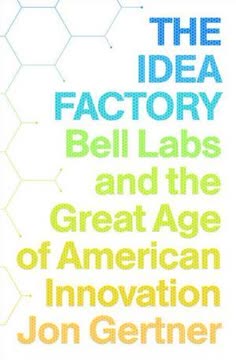
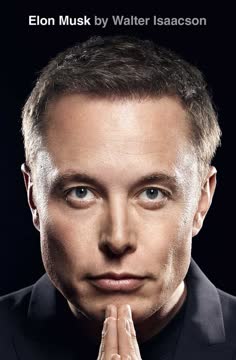


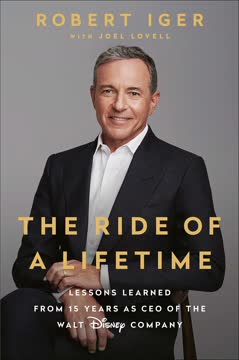
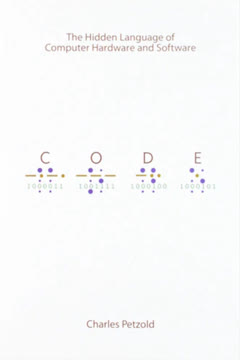

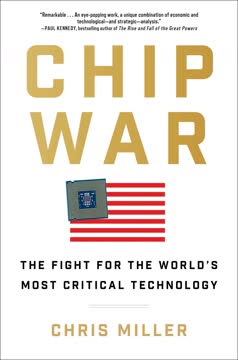

Download PDF
Download EPUB
.epub digital book format is ideal for reading ebooks on phones, tablets, and e-readers.




